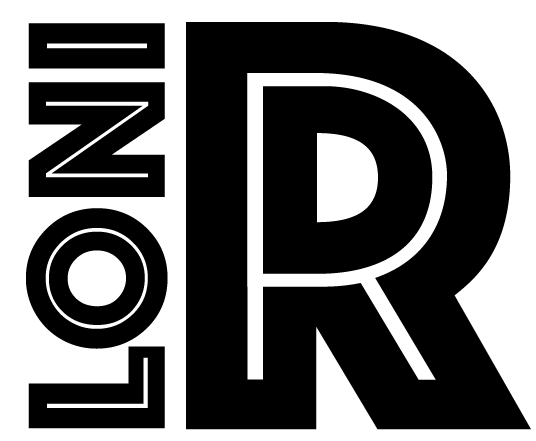Research Protocols
Registration
Registration is the process of positioning a subject’s brain into a defined standard/average/atlas space.
We are registering our brain with the average 305 brains in MNI space. This registration is 3 translation x 3 rotation (no scaling).
- Register the raw mr using the average brain and tags.
- register /icbm/MNI_DATA/average_brain/norm_avg_305_mri_1mm_unfilt.mnc-tag/data/devel/Elizabeth/validity/norm_avg_305_mri_1mm_unfilt.tagcase#_raw.mnc
- Set the average brain to gray, and adjust the intensity of the raw mr to a comfortable intensity.
- (The image can be enlarged by holding shift + the middle mouse button, and it can be moved by holding shift + the left mouse button).
- Pick the 10 tag points on the raw scan corresponding to the ten on the average brain.
- Be sure to always pick the points with the “record tags” icon located on the left of the screen. Never use the right mouse button, otherwise the tag points will not stay in order, and order is critical. This is especially important if you decide to re-pick a point. For example, if you decide to re-pick the first point, go back to the first point by moving the highlighted number up to 1 using the up arrow. Then when you re-pick the point, click the record tag icon. This will move your tag point while maintaining the order. Note: The very center pixel of the cross hair is the actual location of the tag point.
- The ten tag points:
- A. Left and Right Cerebellum (1 & 2)
- Scroll through the sagittal view. Keep an eye on the cerebellum, and watch for when it becomes so small that you can no longer see the horizontal striations. Then in the sagittal view, click on the very center of the cerebellum, seen as an oval shape, with the left mouse button (Fig. 1, Fig. 2).In the coronal view you should be able to see a rough triangle formed by the transverse sinus (Fig. 1, Fig. 3).Look at the coronal view, and select the tag by choosing the apex of the triangle formed by the transverse sinus, cerebrum, and cerebellum (Fig. 2, Fig. 4). Double check through the axial view that the tag point chosen is in approximately the same area as the average brain.
- B. Corpus Callosum (3 & 4)
- Most Anterior Point:
- In the sagittal view, scroll to the mid sagittal slice until you’re at the most anterior point of the corpus callosum (Fig. 5). Click on the most anterior point at which the corpus callosum curves. Be sure to look in all views of the raw scan and compare them to see how similar the image is with the averaged brains. Make sure you are in the very middle by checking in the coronal view that you are between the two hemispheres (Fig. 5).
- Most Posterior Point: Again, go to the sagittal view. You must scroll through again because sometimes the head can be tilted to the left or right (which is visible in the axial view), and find the most posterior point of the corpus callosum (Fig. 6). Click on the corpus callosum right before the point at which it starts to curve in, but after the round peak (Fig. 6). Check in all views and compare your image with the sample images to double check. Note: be cautious of what you think the most posterior point is because sometimes the head can be tilted forward.
- C. Left and Right Eye Sockets (5 & 6)
- Scroll through the axial view until you can see the cornea quite distinctly. Pick the center of the eye socket (Fig. 7, Fig. 8). Scroll through the coronal view to make sure you are at the point where the diameter of the eye socket bones are the largest. Also make sure you are in the middle of the socket. Be sure to check all views, and make sure the tag point is centered in all the views (Fig. 7, Fig. 8).
- D. Fourth Ventricle (7)
Scroll in the mid sagittal view until you are at the very corner of the fourth ventricle (Fig. 9). Look at the axial view to be sure you are in the middle and at the most posterior point of the fourth ventricle. If not just scroll through the sagittal view, while looking at the axial view, until you are at the most anterior point. Then pick the tag point (Fig. 9). - E. Left and Right Temporal Lobe (8 & 9)
Scroll through the coronal view until you are at the most anterior point of the left temporal lobe. Note: be aware of bone and fats that are right below the temporal lobe. Do not confuse the fats and bone with the temporal lobe. Click on the very center of the most anterior point of the temporal lobe. Be sure to pick in the slice right before it is no longer visible (Fig. 10, Fig. 11). Look at all views, and scroll through to be sure you are at the most anterior point. Again be cautious of fatty tissue and deposits. Scroll through and enlarge the image to be sure that you have picked the most anterior point (Fig. 10, Fig. 11). Note: be cautious of what you think is the most anterior point. You must account for the possibility of the head being tilted forward or backwards. - F. Mammillary Bodies (10)
Go to the mid sagittal slice by scrolling through the sagittal view. Use the left and right arrows to go through slice by slice. Tag the mammilary body at the point where the body looks very round and clear. Another reference is to be able to see the brainstem, especially the pons, very clearly (Fig. 12). Note: clear, meaning the structures look well defined, and have a very clear and rigid edge or boundary. - Check the registration
After selecting the tag points, go into the third window, and bring the blend bar all the way to the left. Now scroll through the brain and see: if the temporal lobes come in together, the ventricles come in and leave together, and if the parietal lobes come in together. If there is an asymmetry, check the other lobes and ventricles, and decide if the asymmetry is due to bad tag points, or actual asymmetries in the brain. Also check to see if the midsagittal line is straight up and down. - Save the tags
- Enter the name of the tag file in the top white box, and then press “save tags.”
- case#_reslice.tag
- Save the transformation file
- Enter the name of the transform file in the second white box, and then press the blank yellow box (to save)
- case#_reslice.xfm
- The reorientation transform file is now used to create a reoriented file
- mincresample -short case#_raw.mnc
- case#_reslice_raw.mnc
- -like /icbm/MNI_DATA/templates/icbm_template_1.00mm.mnc
- -transformation case#_reslice.xfm



